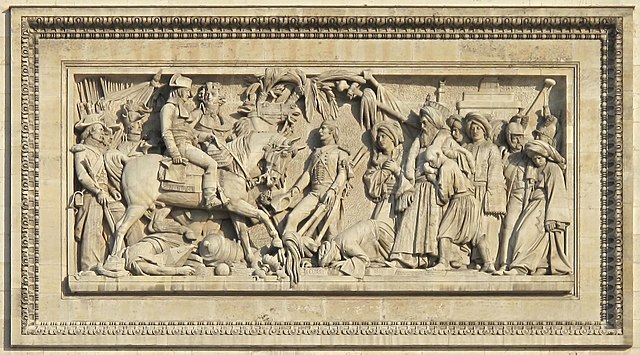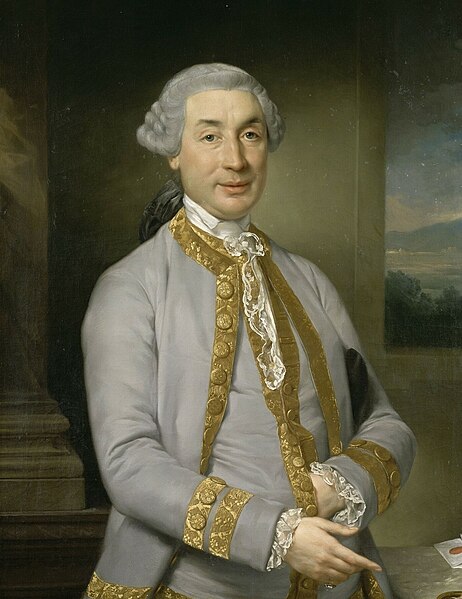In the Battle of Abukir Napoleon Bonaparte defeated Seid Mustafa Pasha's Ottoman army on 25 July 1799, during the French campaign in Egypt. It is considered the first pitched battle with this name, as there already had been a naval battle on 1 August 1798, the Battle of the Nile. No sooner had the French forces returned from a campaign to Syria, than the Ottoman forces were transported to Egypt by Sidney Smith's British fleet to put an end to French rule in Egypt.
The Battle of Abukir, by Antoine-Jean Gros. This painting depicts Joachim Murat's face-off with Mustafa Pasha, who is seen on the right with the injury to his fingers caused by a blow from Murat's saber.
Battle of Abukir
Aboukir fort and peninsula, as it was in 1813.
"The Battle of Aboukir", relief by Bernard Seurre on the South Façade of the Arc de Triomphe, Paris.
Napoleon Bonaparte, later known by his regnal name Napoleon I, was a French emperor and military commander who rose to prominence during the French Revolution and led successful campaigns during the Revolutionary Wars. He was the leader of the French Republic as First Consul from 1799 to 1804, then of the French Empire as Emperor of the French from 1804 until 1814, and briefly again in 1815. His political and cultural legacy endures as a celebrated and controversial leader. He is considered one of the greatest military commanders in history and his wars and campaigns are still studied at military schools worldwide. However, historians still debate the degree to which he was responsible for the Napoleonic Wars, in which between three and six million people died. Napoleon brought modernizing reforms to France and Western Europe and stimulating the development of nation states. He also sold the Louisiana Territory to the United States in 1803, doubling the latter's size. However, his mixed record on civil rights and exploitation of conquered territories adversely affect his reputation.

The Emperor Napoleon in His Study at the Tuileries, 1812
Napoleon's father, Carlo Buonaparte, fought for Corsican independence under Pasquale Paoli. After their defeat, he eventually became the island's representative to Louis XVI's court.
Statue of Bonaparte as a schoolboy in Brienne, aged 15, by Louis Rochet [fr] (1853)
Bonaparte, aged 23, as lieutenant-colonel of a battalion of Corsican Republican volunteers. Portrait made in 1835 by Henri Félix Emmanuel Philippoteaux







![Statue of Bonaparte as a schoolboy in Brienne, aged 15, by Louis Rochet [fr] (1853)](https://upload.wikimedia.org/wikipedia/commons/thumb/3/3d/Bonaparte_%C3%A9colier_IMG_6712.jpg/600px-Bonaparte_%C3%A9colier_IMG_6712.jpg)
